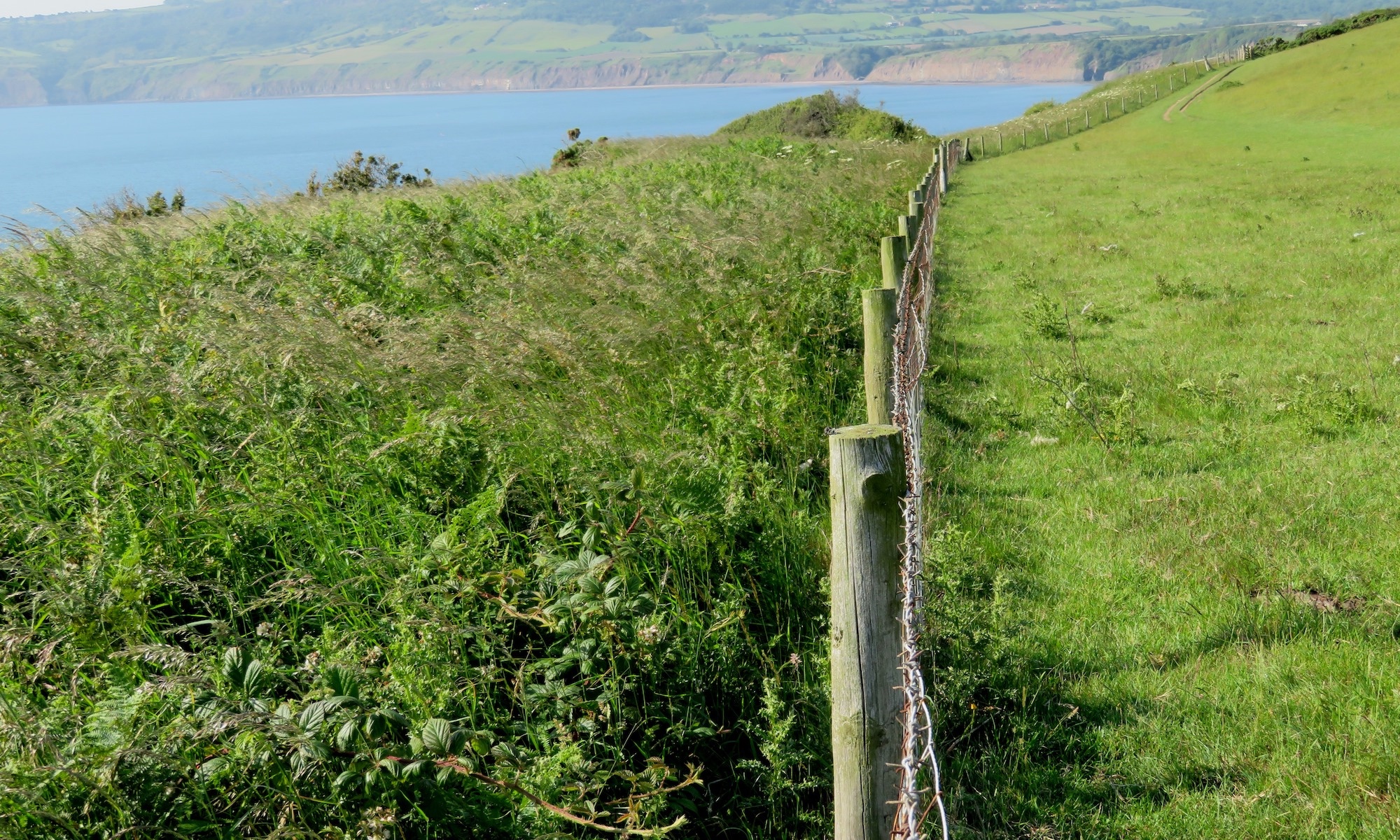by Hilary Koll
24th February, 2023
When watching the emerging changes in rewilded land, year on year, it’s common to find yourself having some negative reactions to things that begin to dominate. Whether it be thistles, nettles, dock or for me, cocksfoot grass, we would rather there wasn’t so much of it! I’ve made peace with our thistles after witnessing the hundreds of goldfinches and linnets in late summer falling on them to feast on their seeds. Nettles, we know, are great for butterflies such as the red admiral, comma, peacock and small tortoiseshell that rely on them as a food source for their larvae. Dock I’m ok with as, along with other benefits to wildlife, they at least soothe nettle rash! “But what about cocksfoot?”
Well, asking myself this question led me on an exciting and interesting journey.
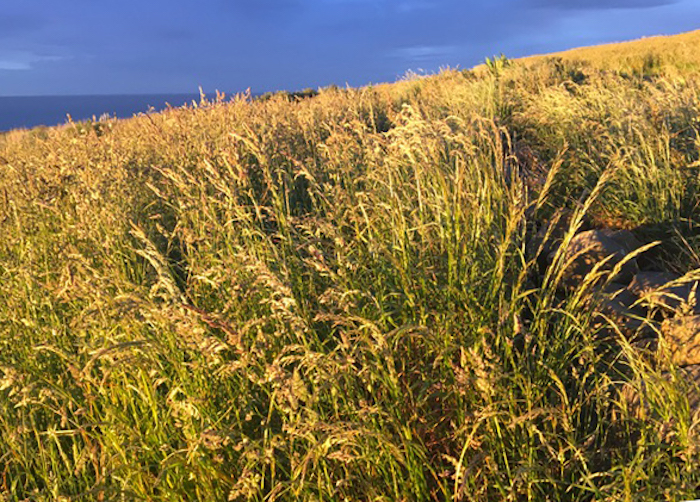
It turns out that cocksfoot is a great plant for Harvest Mice. This adorable native mouse with the Latin name Micromys minutus really is minute, being only 5-7cm long and weighing as little as a 2p coin! The harvest mouse is the only British mammal to have a prehensile tail: it can use it like a fifth limb, holding onto grass stems with it.
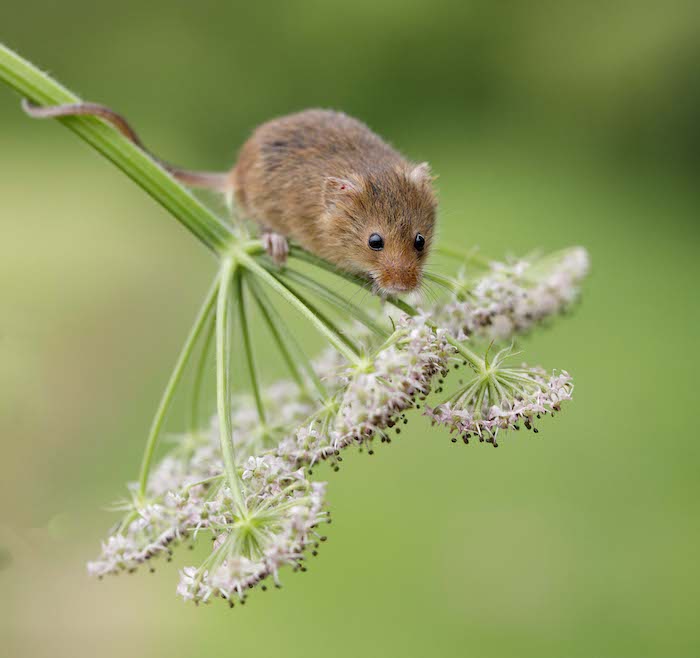
Classified as ‘near-threatened with extinction’ in Britain, it lives in long tussocky grassland, reedbeds, hedgerows, farmland and around woodland edges – the type of habitat that rewilders become very familiar with. They have a very varied diet, feeding on grass seed, fruit, berries, grain, moss, roots and occasionally insects. The tiny mouse builds a spherical nest of tightly woven grass, high-up in tall grasses such as reed sweet grass, common reed and… yes, my dreaded cocksfoot!
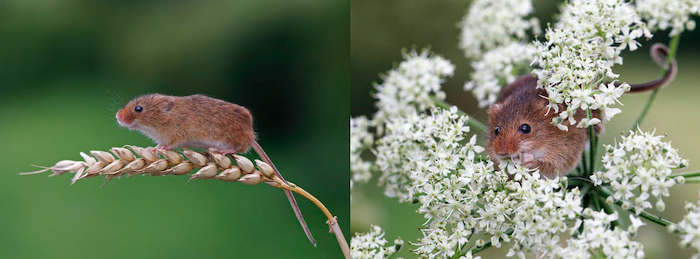
So, my journey to find out more about them began. Several information sites suggested they were found only south of Yorkshire, but as I delved deeper I began to discover that, whether in reaction to climate change or for other reasons, they have more recently been found in northern areas of the UK, including in Scotland.
Thus, I set about trying to find whether they were in my local area, near Whitby. These little creatures are massively under-surveyed and initially I found only reports of them in Scarborough in 1975! But by meeting and talking to local naturalists the picture began to grow. Whilst seeing Harvest Mice in the wild is extremely difficult, searching for their nests in tussocky grasses, while not easy, is much more manageable. Another method is to look for evidence in Barn Owl pellets, although their tiny skulls can sometimes break up and be overlooked when analysing.
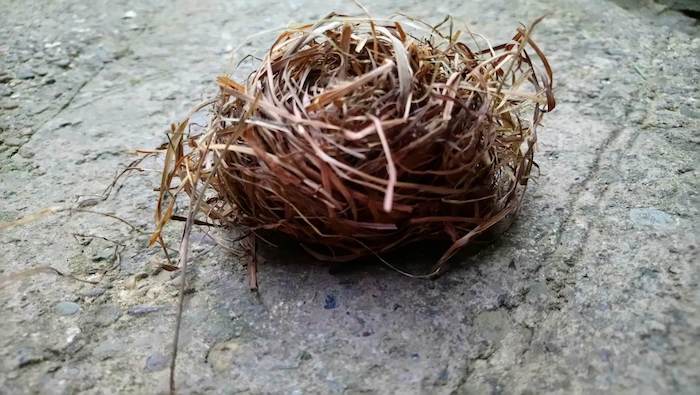
Local ecologists began to inform me of a small number of known locations and gave me names of other useful contacts. It turns out that The Mammal Society and other regional organisations are all really keen to get more data about this, particularly in the ‘black hole’ of my under-reported area. Nests are best found when vegetation is dying back in autumn and winter, ideally during overcast days between October-January, but it’s still worth looking in February and March. So, if you have any wild areas close by, I urge you to go exploring for nests or consider analysing any owl pellets you find. Before heading out to any wild habitats nearby, it might be worth watching the video (linked below) showing a wildlife group surveying a site for Harvest Mice nests. Alternatively, contact your local representative of the Mammal Society and join the annual National Harvest Mice Survey which is in its second year of running (see links below).
I’d love to hear of any reports of nests or evidence you find in whatever area of Yorkshire you are. The more data is gathered on this exquisite creature the more we can help its population to thrive in our region. I’m discovering that there are practical things we can do to help them, including providing tennis ball nests, but more about those next time.
I will continue the story of my journey next time, which involves exploring the exciting prospect of Harvest Mice reintroduction in rewilded land in Yorkshire.
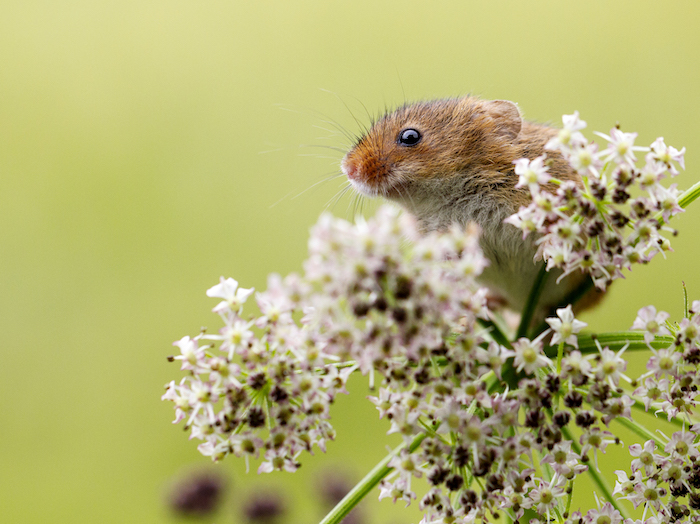
If you’d like to contact Hilary about any sightings, send us a message on our contact page and we will pass it on. Alternatively, you can message her directly on our Forum (join the Yorkshire Rewilding Forum here).
For more information, see the links below.
Useful links:
Mammal Society Harvest Mouse Project
Video of wildlife group surveying a site for Harvest Mice nests
National harvest mouse survey results
